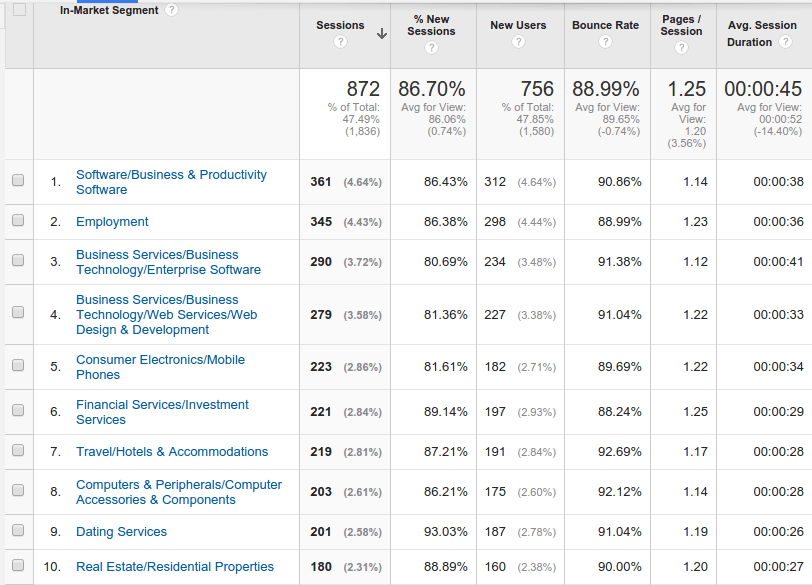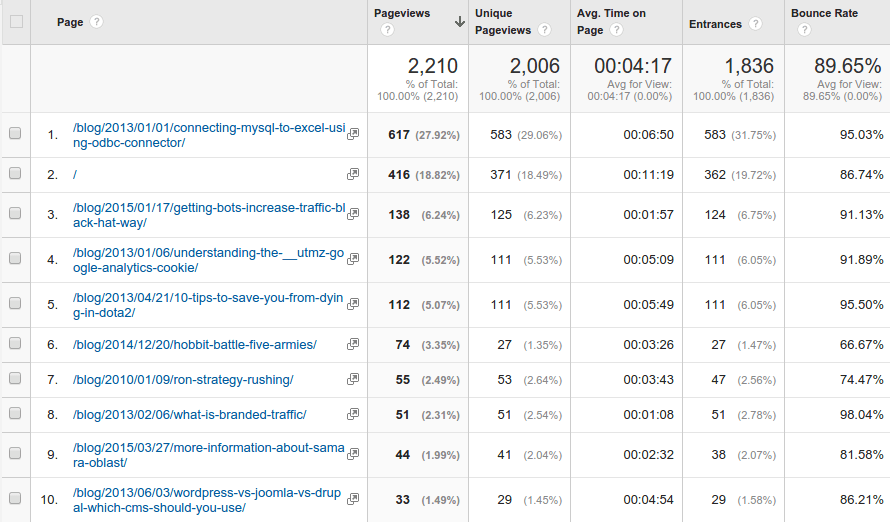Almost all blogs / content based websites use some format of web analytics or the other. This post is for those folks who are running content focused sites and need cues from Google Analytics data on what to write.
Really? All the sites run GA?
I feel that web devs should by default do this work when building content based sites or content management systems (CMS).
Having said that, if you look at the State of the Word reports of WordPress, the sheer market share of WordPress as a CMS is mind boggling. More than 25% of the top 10 billion sites (in terms of traffic) across the world are powered by WordPress.
The share of Google Analytics is even more impressive, and that’s why it is fair to assume that most CMS based websites are running Google Analytics.
So, if I do not have Google Analytics, then I should stop reading this post?
Not really!
If your web analytics package can provide you with these interesting reports which GA does, then there is no need to deploy GA. However, if you have no clue about the next set of reports that I am going to talk about next, then it’s time you head to the GA site and start thinking about switching to Google Analytics.
Using the Audience Interests reports
I have already talked about the Audience Interests reports in Google Analytics. However, the following reports are often overlooked by content creators –

The Affinity Categories report in Audience Interests tells us what other topics are our audiences also reading. Now this is insightful, look at my blog’s affinity categories carefully. Do you see Computer Games anywhere … I dont. Then why the hell am I writing about Computer Games on this blog? I should focus more on talking about the latest movies and TV Shows, about Recent events and breath taking photographs.
That’s theory, but at least its a step in the right direction! No more gaming posts on this blog … well, not by design anyway. I might still rave about some games once in a while :)

Now, if you are also into monetization of your content either through Affiliate programs or through managing your subscriber list (do not worry, I am not into that yet!), then the In-Market Segment report will help you identify which category of products should you showcase on your site.
This report (screenshot shared above) tells me that I should start doing some guest posts by SaaS products who sell productivity apps, or grab an affiliate link of such tools myself and write persuasive copy around those apps.
Using the Site Content section
The site content section provides us with reports which gives us more information about the website’s content. Naturally, this section is something which we have to use in figuring out how our website’s users are consuming our content.
The first report in this section is the All Pages report –

This report tells us the most popular pages that are there on your blog. The way you would want to use this report is select a time period for which you want to see your most popular posts, and then see the most visited pages.
This is the content that gets you the most traffic, if the bounce rate is less, even better. If its getting you conversions (if you have configured them in Google Analytics), then all the better.
For blogs/sites which are running AdSense, this is the report which will let you know which pages are making the most AdSense revenues for you :)
Write more of such content because that’s what is getting you visitors. For me, it seems to be MySQL/Excel and Google Analytics (hence this post ;-) ).
Checking the Content Velocity
One of the major factors why a blog or a content marketing website attracts more search traffic is the rate at which they publish unique content.
Now this might seem like a quite generic statement (“Buy low and Sell high to make money“). Therefore to test this, I did a small experiment (which lasted over 6 months).

In the month of April, I posted on a regular basis (you see those annotations), that’s each post a day. One of the posts went viral and hence the spike.
Then I gradually reduced the rate at which I published content and hardly published any content for the next 5 months …. my web traffic started dipping.
In the month of September, I am now starting to publish more regularly, and I seem to be getting more traction.
Closing Notes
I would not say that I know all there is to know in Google Analytics or in Content Marketing. So, if you think there are more reports which can be useful for content marketers, feel free to share those in the comments!
